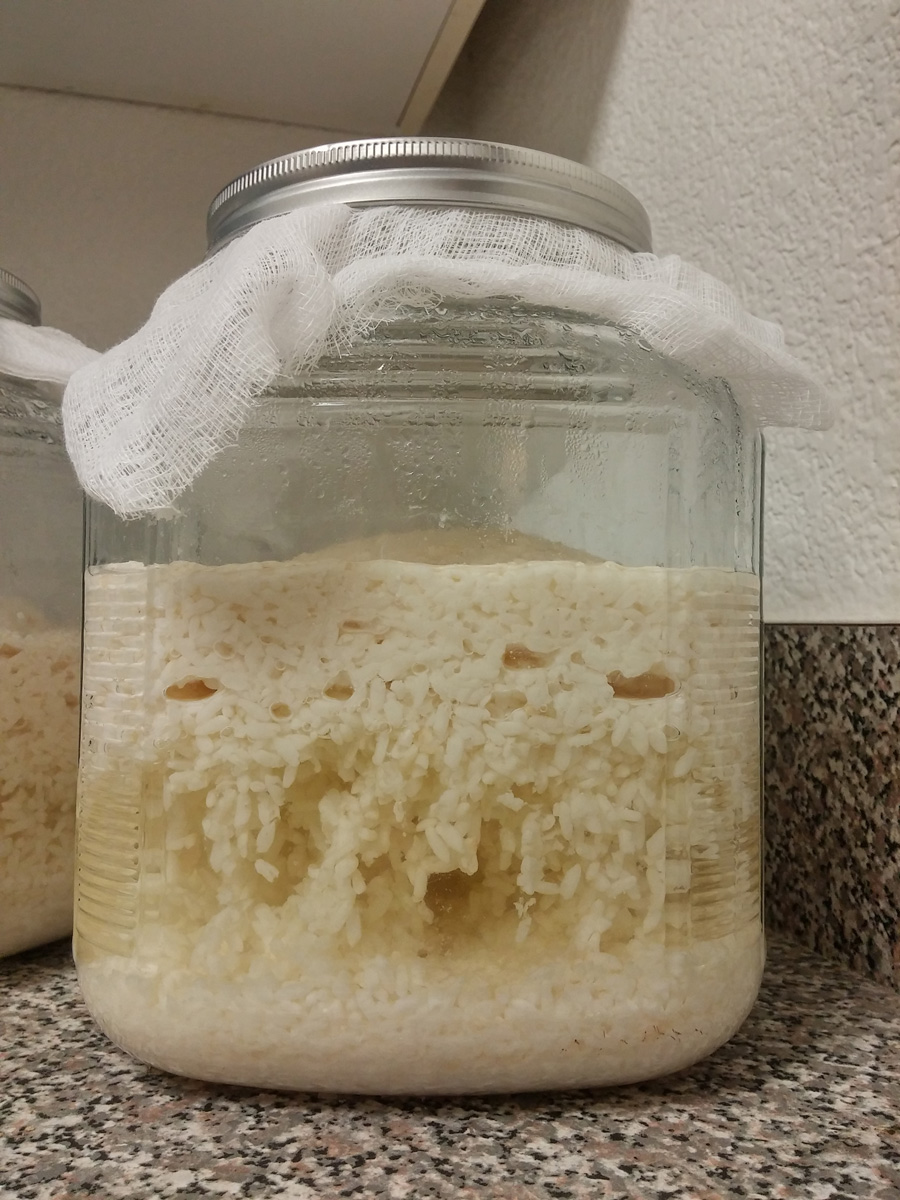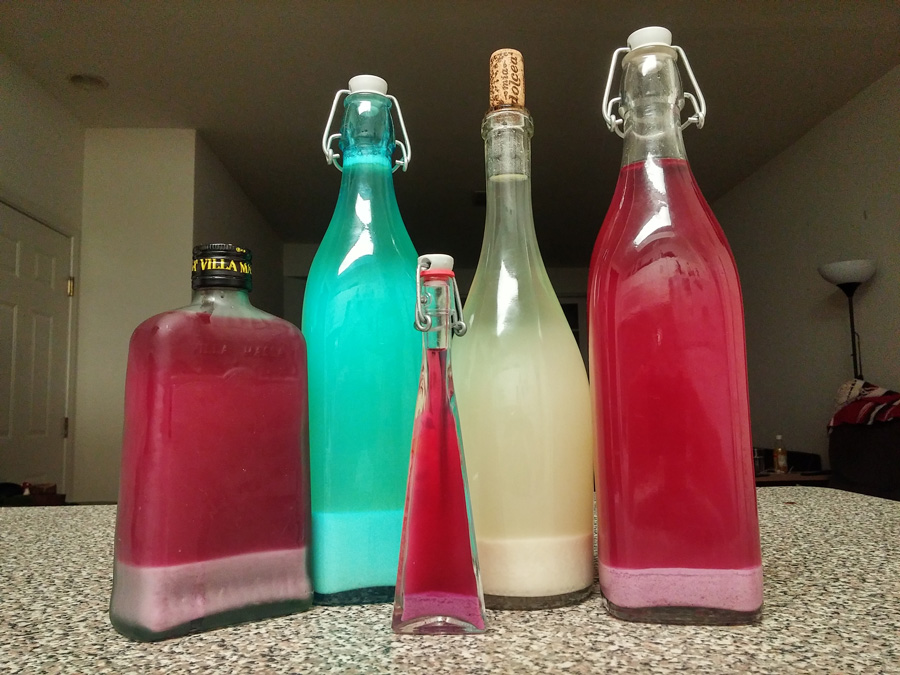I tried ... really tried to read through 125 pages of posts, but I admit to having ADD and skipping around.
I bought Sweet Rice and soaked it for 2 hours and then added it to my rice steamer.
When it went off (auto on/off) I had a gooey mess with about an inch of slimy glue on top that I swear you could use to hang wallpaper. It was that sticky.
So I set it aside thinking maybe rice pudding or something and tried again with less water. Same thing happened.
Dumped both batches into a large pot and tried cooking it again for another hour over medium heat ... didn't really seem to affect it AT.ALL.
Sigh .....
Basically said ::insert lots of swear words here:: and dumped the whole mess into my large 4 liter jar and added 5-6 yeast balls ground up.
Next day, I started to notice some liquid forming. YAY!
Now, I just saw gray/black stuff growing on the top of the rice and freaked. Came back here and saw where folks were saying that this happens if I put the rice in a clear jar (check) and leave it in the light (check).
- Should I stir this or leave it alone?
- Should I move it to a dark area or is it too late?
- Is it ruined and should I throw it away and start over?
I'm not grossed out by the gray/black stuff, but I don't want to make anyone sick if it's not a positive thing to have.
Thanks!






